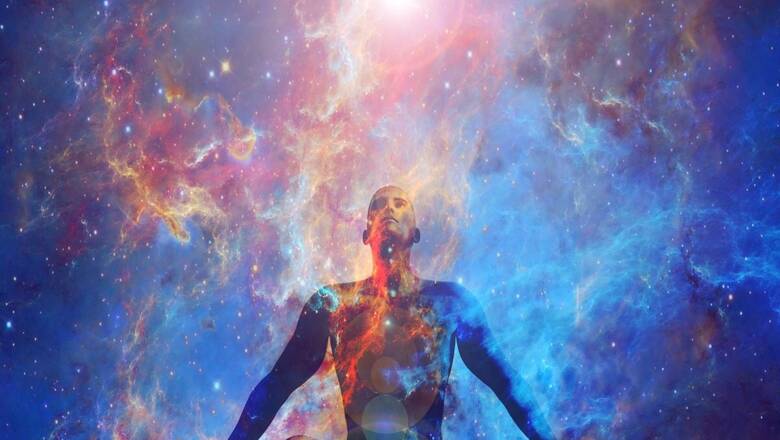
views
A team of Indian Space Research Organisation (ISRO) scientists visited the Tirupati temple in Andhra Pradesh ahead of the Chandrayaan-3 mission. Moreover, on his visit to Pournamikavu, Bhadrakali Temple in Thiruvananthapuram, ISRO Chairman S Somanath also reiterated that he is on a journey to explore both science and spirituality. As if all of that wasn’t enough, India decided to name the landing point of the Chandrayaan-3 spacecraft the Shiv Shakti point. Hence, the self-proclaimed warriors of reason and rationality, most of whom presumably struggled to pass high school physics, suddenly found it necessary to sermonise the ISRO scientists on how to “science”; sparking the age-old debate about whether scientific progress needs to be intertwined with the spiritual prowess, or whether a “secular” country like India should be choosing names like the Shiv Shakti point.
A cursory understanding of both science and spirituality might give the illusion of separation; however, a deeper look reveals that the debate itself is quite irrelevant, at least in the Indian context, and demonstrates a lack of exposure to the rich tradition of science and spirituality leading each other throughout Indian history.
The tradition goes as long back as the Rig Veda, where the Hymn of Creation (Book 10 Hymn 129) discusses scepticism at knowing exactly what existed at the beginning of existence.
It states: Then was not non-existent nor existent: there was no realm of air, no sky beyond it.
What covered in, and where? and what gave shelter? Was water there, unfathomed depth of water?
He, the first origin of this creation, whether he formed it all or did not form it,
Whose eye controls this world in highest heaven, he verily knows it, or perhaps he knows not.
Yes, that is a supposedly religious text teaching the highest levels of scientific inquiry. Ayurveda further contains surgical procedures and modes of synthesis and administering of drugs for specific types of diseases. The four major Sulba Sutras, attributed to Baudhayana, Manava, Apastamba and Katyayana, arguably contain the first ever mention of the Pythagorean triplets which were used to construct fire-altars at the temples. Moreover, one of the greatest breakthroughs in the history of mathematics, i.e. the creation of zero as a number in its own right, is rooted in the spiritual wisdom of India which embraced the concept of “nothingness”. The concept of zero is essential to a system that’s at the basis of modern computing, binary numbers, which basically helped shape the modern world.
The ancient Hindu texts, curiously enough, delve deep into the debates of human consciousness, the ego and the self; also providing insights into the forces of nature that constitute the very fabric of our reality. Advaita Vedanta emphasises the concept of oneness or non-duality (Advaita), where the ultimate reality (Brahman) is considered a single, interconnected consciousness that underlies all of existence. The Spandakarika, one of the essential texts of Kashmiri Shaivism, discusses vibration or sound inside the Divine, a throb which constitutes both the objective exterior reality and the subjective world. A deeper look at the subatomic world today reveals that all matter is just energy pulsating, vibrating at different frequencies. The cosmic dance of Shiva is symbolic of a pulsating process of creation and destruction which, for modern physicists, is the dance of subatomic matter, the basis of all existence and of all-natural phenomena. That is the reason that a statue of Lord Nataraja stands tall at the CERN facility in Geneva, where scientists observe the dance of the subatomic particles day in and out.
So, when India names the landing point on the moon Shiv Shakti, it is a tribute to the thousands of years old tradition of seeking to understand the forces and phenomena that constitute reality.
This conflict between scientific progress and spiritual seeking arose in the West where, at the time of Renaissance, the church saw the age of reason as an assault on its authority. Galileo Galilei, Giordano Bruno, and Giuseppe Pontremoli are a few names among many who directly or indirectly faced persecution for supposedly challenging conventional beliefs. Even in Western traditions, there were a few thinkers who sought to combine these elements; Baruch Spinoza is one such prominent name in this regard, who also influenced the views of Albert Einstein.
In a relatively recent day and age, Srinivasa Ramanujan took this tradition to new heights. One of the greatest mathematicians of all times, he was able to publish about 4,000 theorems without any formal training in mathematics, attributing this knowledge to the divine providence of Mahalakshmi of Namakkal, a family goddess whom he looked to for inspiration.
The Missile Man of India, APJ Abdul Kalam, who was also instrumental in bringing about the Indian space program, was the epitome of a spiritual technocrat. In Wings of Fire, he writes, “I have always been a religious person with the sense that I maintain a working partnership with God.” In one of his books, he writes that whenever he couldn’t find a solution to a problem, he would get it during the prayer of Fajr.
For the uninitiated, the works of Swami Vivekananda can provide deeper insights into the intricacies of “practical spirituality”, introducing Indian philosophies, including Vedanta, to the Western world. Many Western writers including Alan Watts and Fritjof Capra have kindled a renewed interest in this blend of ancient Eastern philosophies with modern science.
So, when ISRO scientists visit the temples before a launch or a point is named Shiv Shakti on the moon, the ensuing debates either come from a colonial perspective or through ignorance of ancient Indic heritage. Chandrayaan-3 isn’t an isolated event but rather a continuation of India’s age-old quest for understanding the cosmos. Like Aryabhatta and Charaka before, it symbolises the contemporary pursuit of knowledge flowing seamlessly from India’s rich tradition.
The debate between science and spirituality is irrelevant in India, where both have been intertwined for centuries. As we celebrate Chandrayaan-3’s achievements, we must also celebrate the enduring harmony between scientific exploration and spiritual contemplation that defines India’s unique intellectual heritage. This legacy stands as a potent reminder that science and spirituality can coexist, enriching our understanding of both the physical world and the inner self.
The author takes special interest in history, culture and geopolitics. He is a proponent of religious reform and identifies himself as “an Indic Muslim exploring Vedic knowledge and cultural heritage through music”. When he is not writing columns, he enjoys playing drums and performing raps. Views expressed in the above piece are personal and solely that of the author. They do not necessarily reflect News18’s views.




















Comments
0 comment